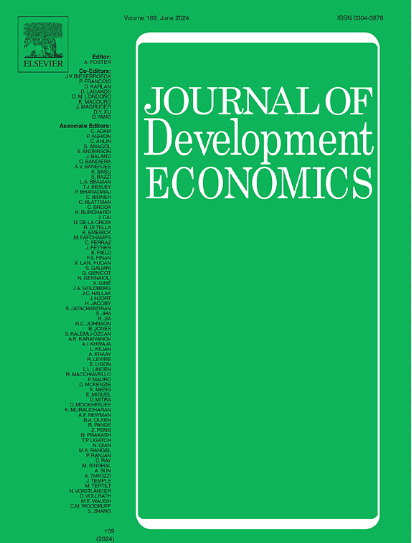将工人权利扩大到儿童的影响
IF 5.1
1区 经济学
Q1 ECONOMICS
引用次数: 0
摘要
全世界每两名童工中就有一名在危险条件下工作。玻利维亚出台了一项法律,为童工提供福利和保护,并将事实上的法定工作年龄从 14 岁临时降至 10 岁。我们采用了一种 "差异-不连续 "方法,利用了该法律在不同年龄组中的适用差异。14 岁以下儿童的工作减少了,因为他们的工作新近合法化并受到法律的监管,尤其是在检查威胁较高的地区。法律撤销后,这些影响也随之消失。我们没有发现工作安全得到改善的证据。因此,这种效应似乎并不是由确保工人安全的雇佣成本增加所驱动的。相反,效果似乎是由最明显的儿童工作形式的减少所驱动的,这表明企业和父母(家庭)可能减少了对幼儿的雇用,以尽量降低受到法律和社会制裁的风险。本文章由计算机程序翻译,如有差异,请以英文原文为准。
The effects of expanding worker rights to children
One out of two working children worldwide works in hazardous conditions. We study the effects of a law that introduced benefits and protections for child workers and temporarily lowered the de facto legal working age from 14 to 10 in Bolivia. We employ a difference-in-discontinuity approach that exploits the variation in the law’s application to different age groups. Work decreased for children under 14, whose work was newly legalized and regulated under the law, particularly in areas with a higher threat of inspections. The effects disappear after the law is reversed. We do not find evidence of improvements in work safety. Thus, the effects do not appear to be driven by increased hiring costs to ensure worker safety. Instead, the effects appear to be driven by a reduction in the most visible forms of child work, suggesting that firms and parents (households) may have reduced employment of young children to minimize the risk of being subject to legal and social sanctions.
求助全文
通过发布文献求助,成功后即可免费获取论文全文。
去求助
来源期刊

Journal of Development Economics
ECONOMICS-
CiteScore
8.30
自引率
4.00%
发文量
126
审稿时长
72 days
期刊介绍:
The Journal of Development Economics publishes papers relating to all aspects of economic development - from immediate policy concerns to structural problems of underdevelopment. The emphasis is on quantitative or analytical work, which is relevant as well as intellectually stimulating.
 求助内容:
求助内容: 应助结果提醒方式:
应助结果提醒方式:


